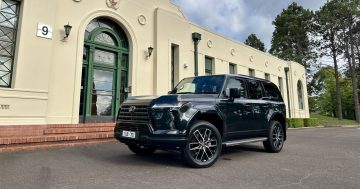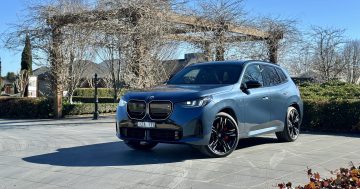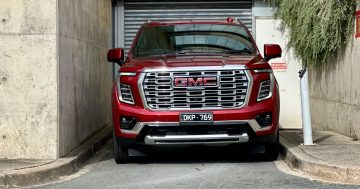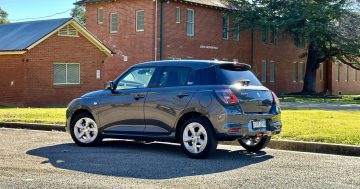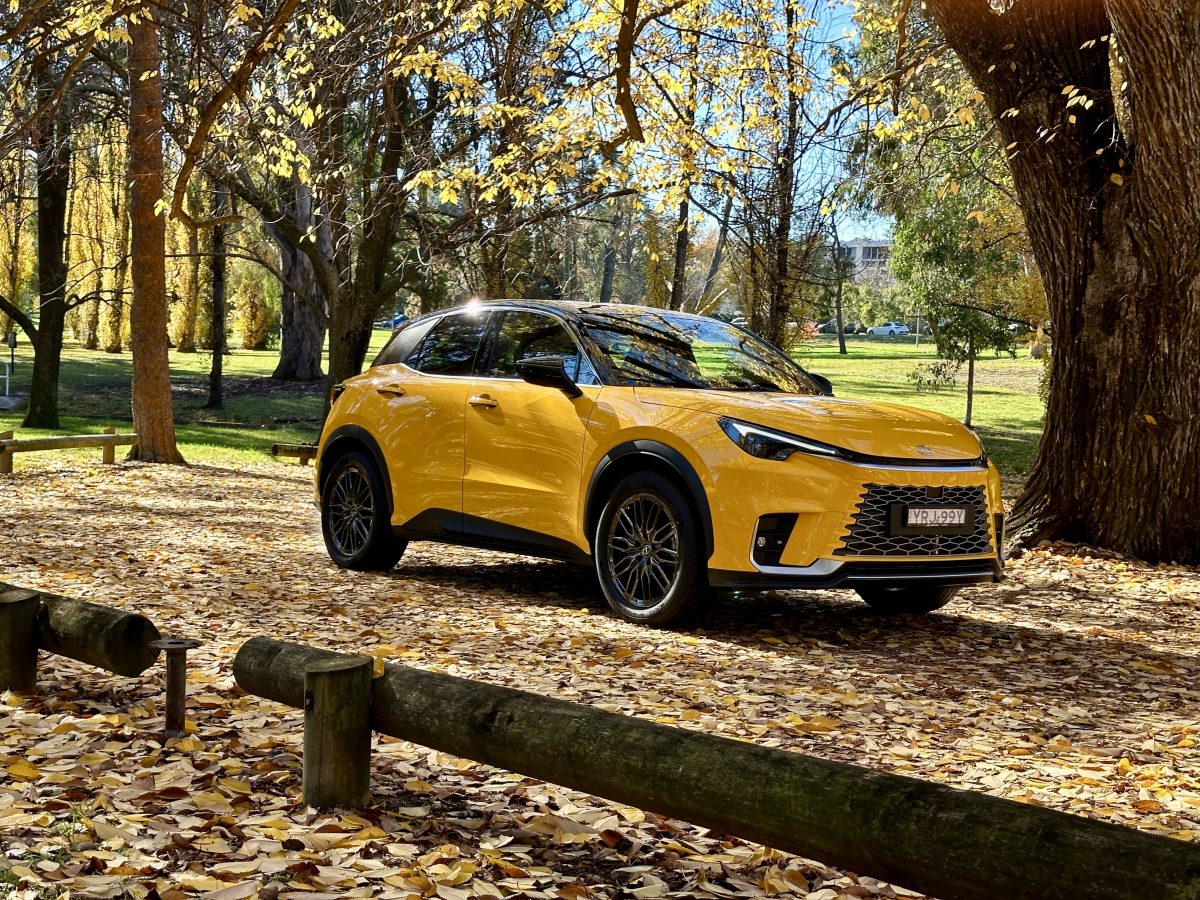
Posing on a carpet of autumn leaves at Telopea Park. Photo: James Coleman.
Crossover is another word for compromise, and therefore something where the outcome is never good.
I don’t much like crossovers. They feel confused, useless, stupid even. I’d rather have a lower car adept at handling or a proper 4WD I could send into the Brindabellas or over a gutter in the shopping centre car park with abandon.
But all my grumbles faded away when I turned up at the Lexus dealership and was handed the keys to a new LBX in full-on Bumblebee spec.
I normally think crossovers look like the spawn of a particularly ugly fish species. And although the LBX does appear very wide from the back – a vet would describe it as having “very good birthing hips” – the overall result is cool and funky. Helped by ‘Citrine Flair’.
Over the last few years, we’ve seen Lexus dial up its trademark ‘spindle grille’ to 11 proportions, but they’ve even integrated that quite nicely too.
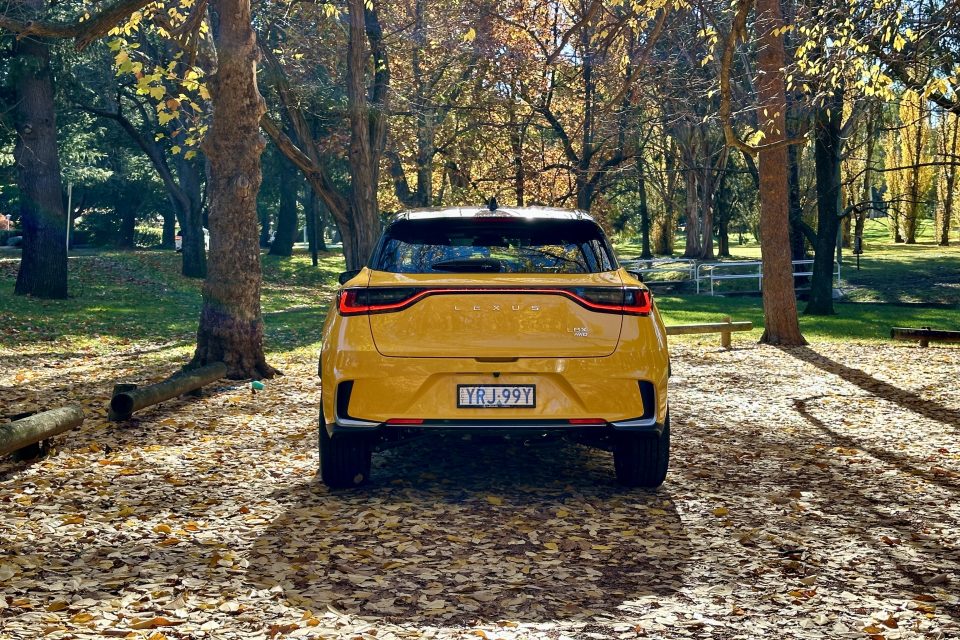
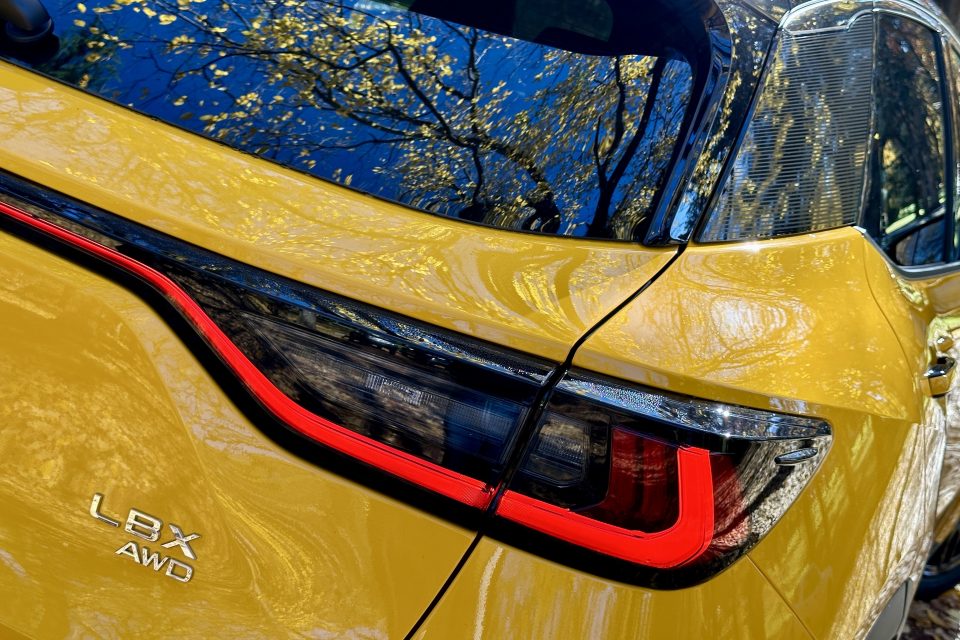
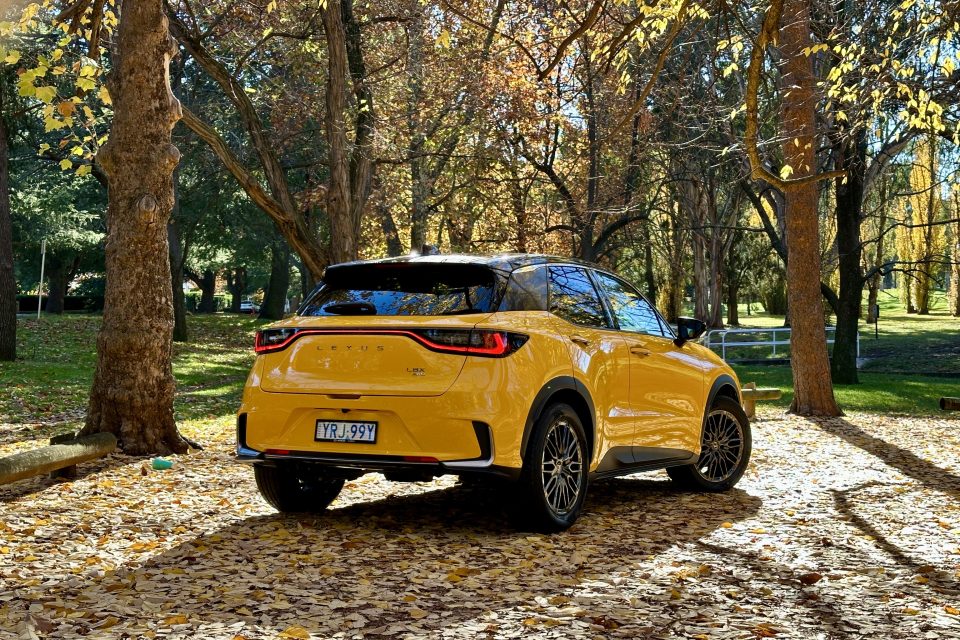



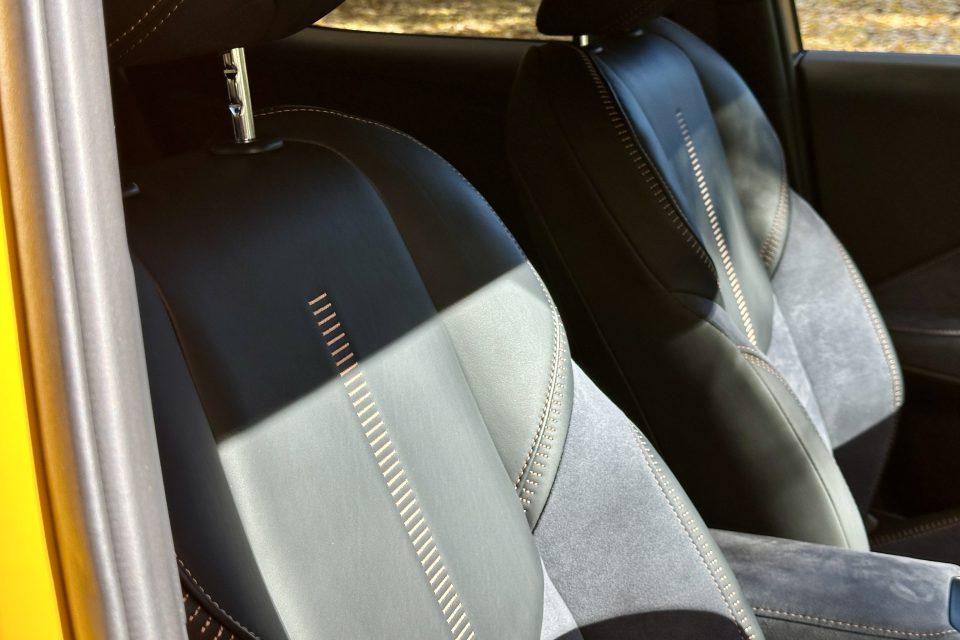
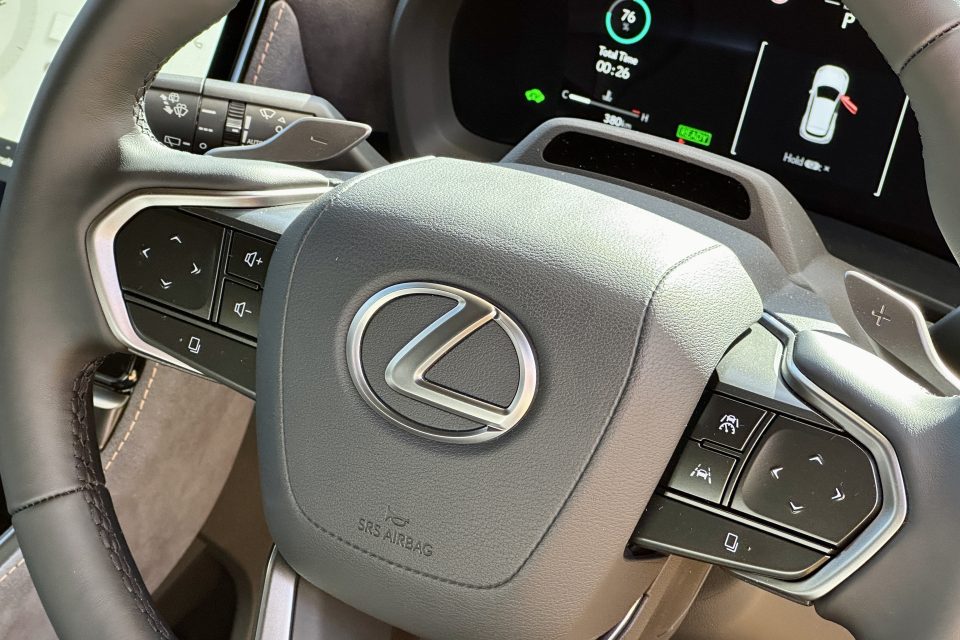
Starting at $47,550 for the two-wheel-drive ‘Luxury’ model, the LBX is the gateway to the world of Lexus, and newer and fresher than its slightly larger sibling, the UX. I’ve borrowed the Sports Luxury, with prices from $52,990 for the 2WD and $56,990 for the AWD.
Don’t get me wrong. It’s a superb car.
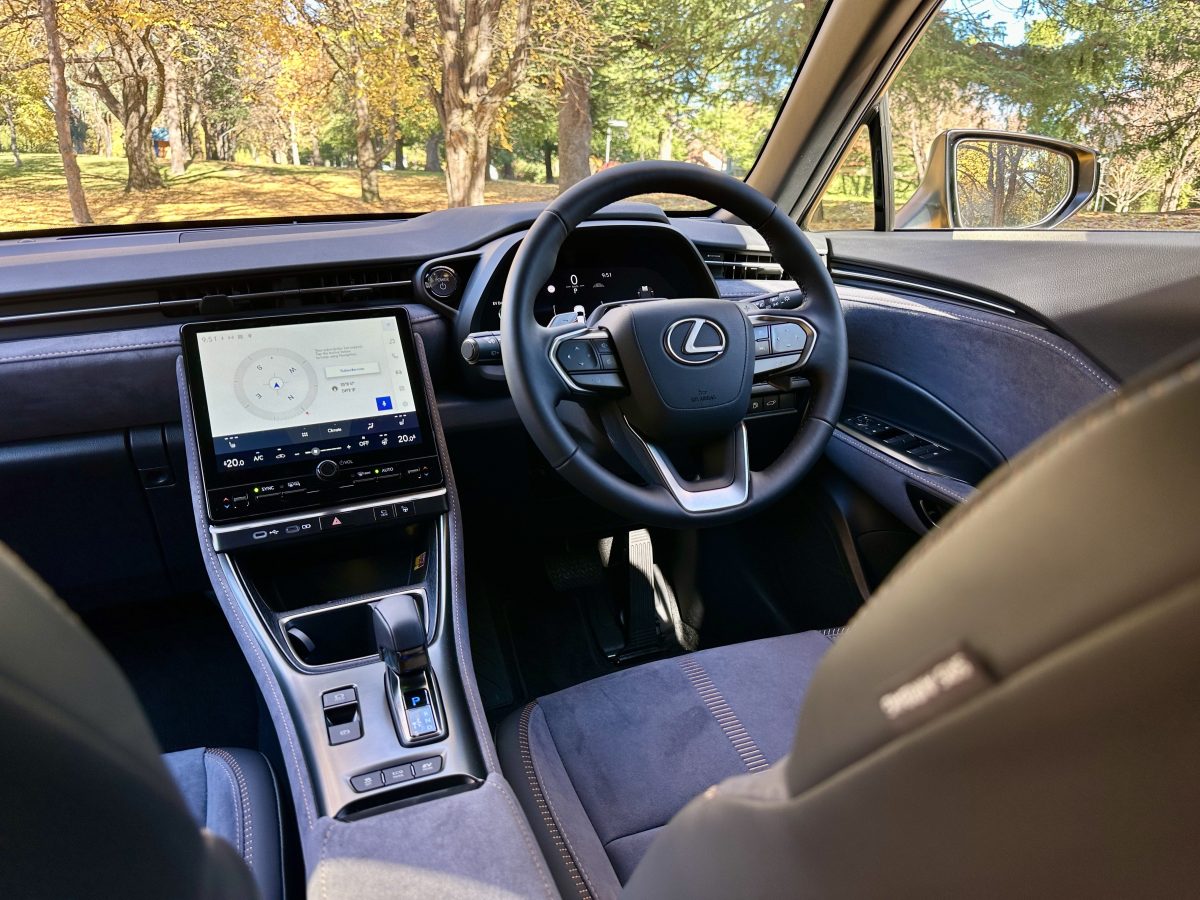
The mix of leather and suede inside is made to last. Photo: James Coleman.
The interior is trimmed in a delicious mixture of leather and suede, and you’re sure everything you touch will still be there millennia from now. The heads-up display in front of you is clear and crisp, and any safety alerts are administered with a polite bow.
Now that it’s cooled down a bit, the heated seats – and steering wheel – were a treat too.
The same refinement flows through underneath. The LBX borrows the decades-old hybrid system from Toyota, here in 1.5-litre three-cylinder petrol form. The revs flare up at the slightest provocation, with a similar sound to an industrial air-conditioning unit, but it’s distant.
Not only could you have a conversation with a back-seat passenger in whispers – it’s that quiet inside – the whole drivetrain runs on silk. It’s beautifully smooth. And efficient – Lexus claims a fuel consumption figure of 3.8 litres per 100 km.
Despite an extra electric motor on the rear axle, the AWD makes the same amount of power as the 2WD, so there’s plenty of go across the range too.
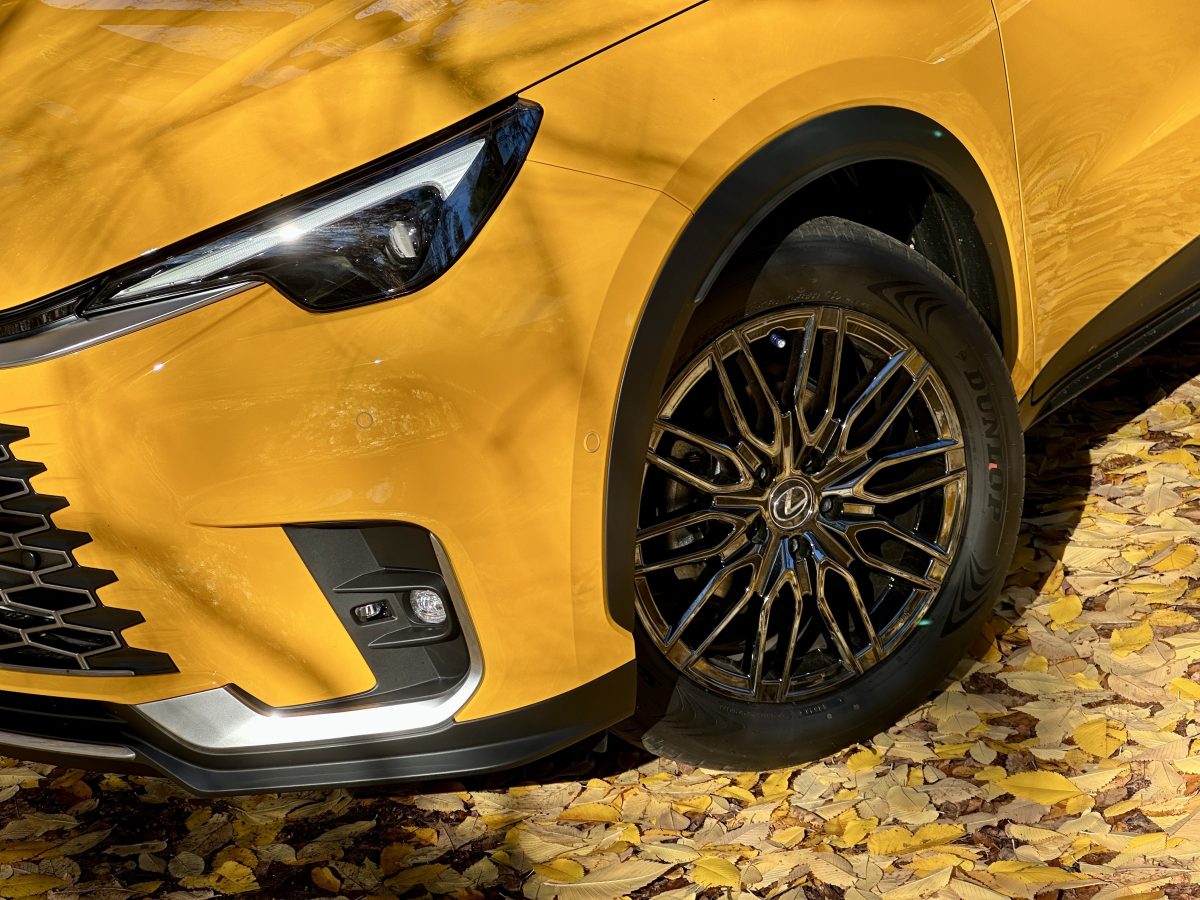
Build quality is as solid as you’d expect. Photo: James Coleman.
But the LBX does also feel a bit like a gateway car.
The infotainment system is clearly lifted straight from a Toyota, and my test car even asked me to “subscribe now” to use the sat nav. An actual buyer will score a three-year complimentary subscription and probably end up using third-party apps like Apple Maps or Waze anyway, but it still felt like it may as well have said “you peasant”.
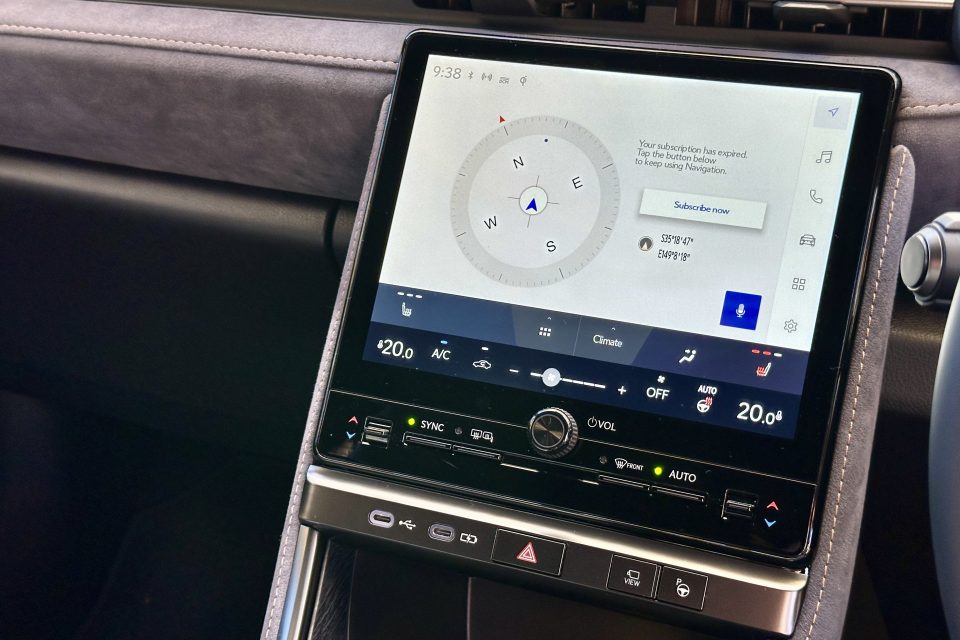




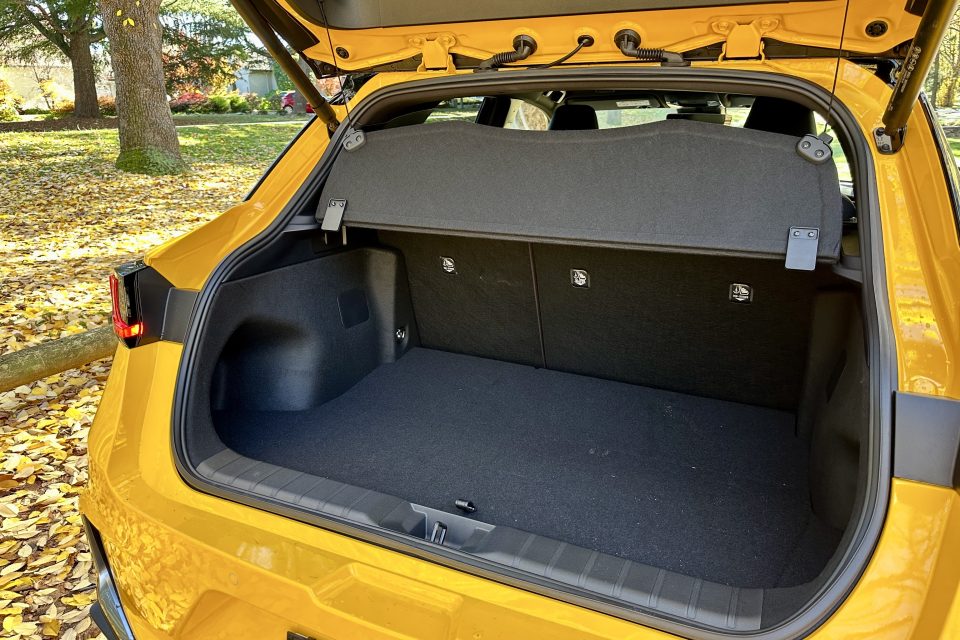

Everyone except the driver has to adjust their seat themselves, manually, and there are no AC vents in the rear seats like its 2003 again and you’re in a Daihatsu Charade. Forget the electric door handles with their little buttons on the inside, and just give me these things.
When the similarly sized Toyota CH-R with all the ‘GR Sport’ bells and whistles starts from $54,990, it’s hard not to feel a little fobbed off by the LBX. Maybe the cheaper Luxury model makes more sense.
But then I’d get out at the end of a drive and my heart would swell again with the sheer yellowness of it. All is well with the world again.
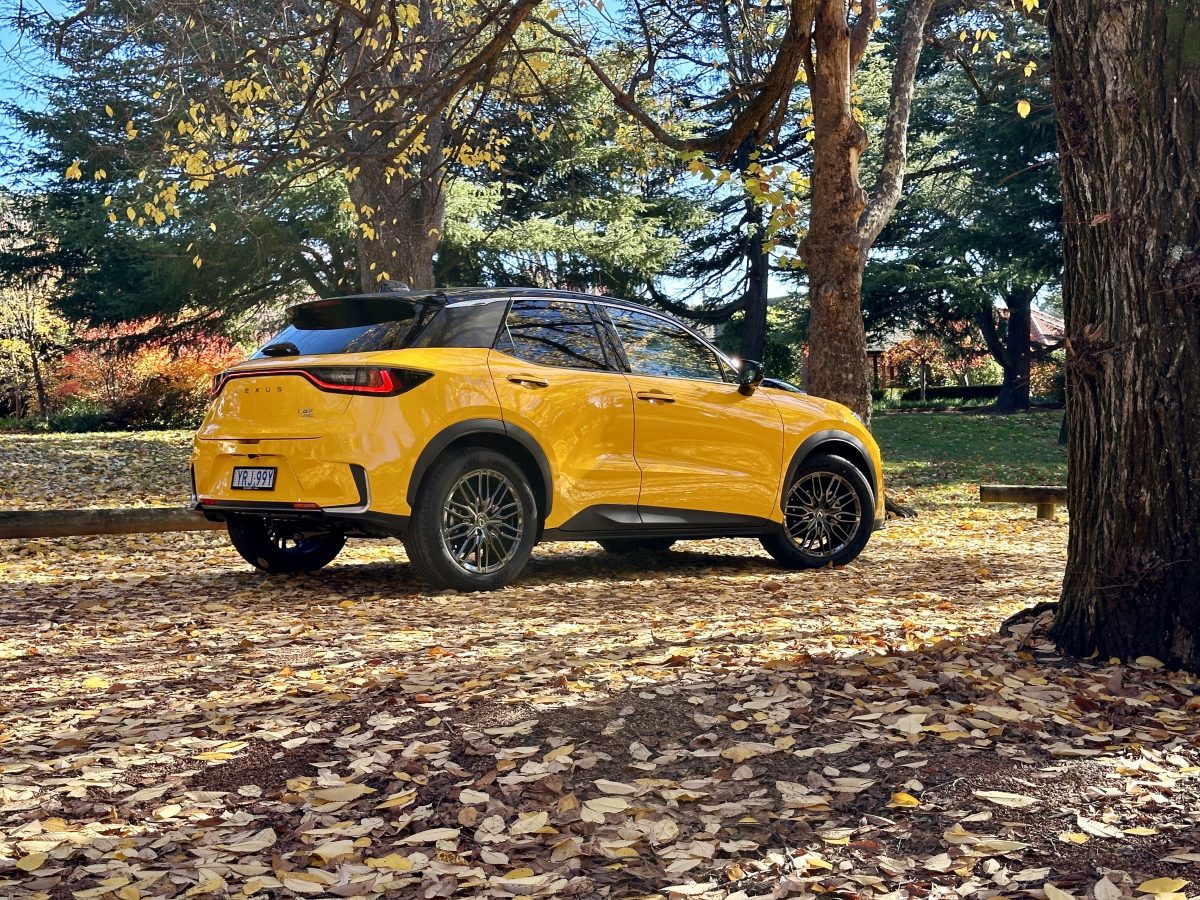
The entry-level Luxury model starts from $47,550. Photo: James Coleman.
2024 Lexus LBX Sports Luxury AWD
- $56,990 (plus driveaway costs)
- 1.5-litre three-cylinder petrol hybrid, 100 kW
- CVT automatic, all-wheel drive (AWD)
- 3.8 litres per 100 km claimed fuel usage, 36-litre tank
- 1415 kg
- Not yet rated for safety.
This car was provided for testing by Lexus of Canberra, Phillip. Region has no commercial arrangement with Lexus.
Original Article published by James Coleman on Riotact.







